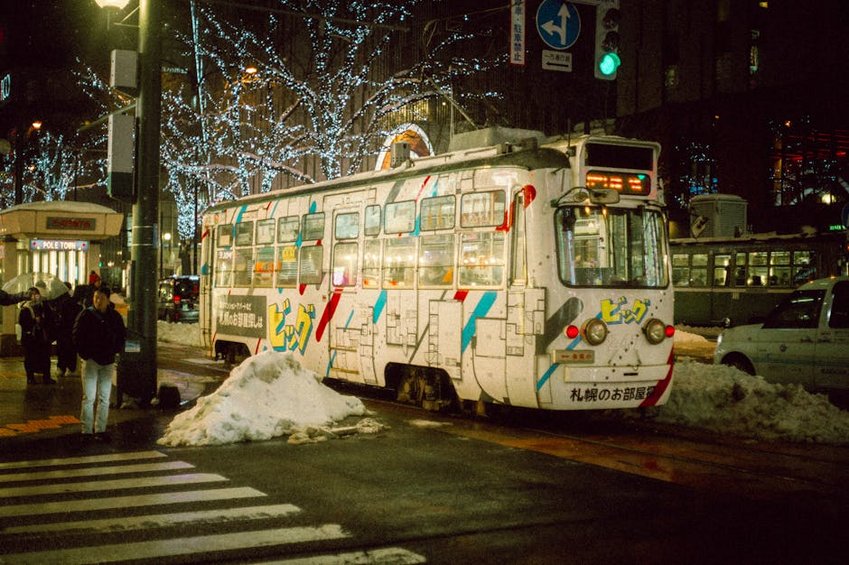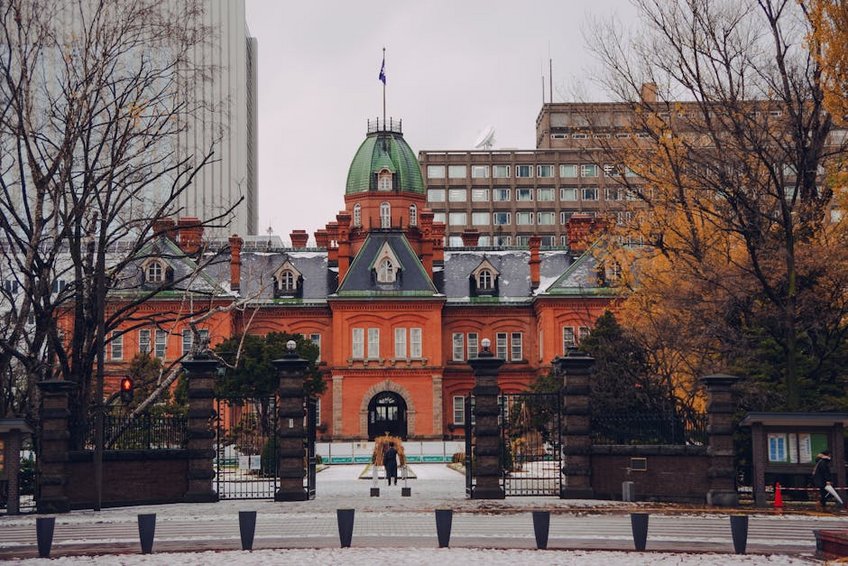Sapporo Snow Festival: Your Ultimate Guide to Japan’s Winter Wonderland
Imagine walking through a magical winter landscape where towering ice castles glitter under the stars, intricate snow sculptures tell stories of ancient legends, and the aroma of steaming street food fills the crisp air. Welcome to the Sapporo Snow Festival, one of Japan’s most spectacular winter events that transforms Hokkaido’s capital into an enchanting frozen paradise. Every February, over two million visitors from around the world flock to this incredible celebration of winter artistry and culture. You’ll discover three main festival sites featuring hundreds of stunning snow and ice creations, from massive architectural replicas to delicate character sculptures. Whether you’re a winter sports enthusiast, a cultural explorer, or simply someone who appreciates breathtaking artistry, this festival offers an unforgettable experience that combines Japanese tradition with modern entertainment. The Sapporo Snow Festival represents the perfect blend of natural beauty and human creativity, making it a bucket-list destination for anyone seeking authentic winter magic.
Sapporo Snow Festival Essential Information – What Every Visitor Needs
Before you embark on your winter adventure, understanding the festival’s structure and history will significantly enhance your experience. The Sapporo Snow Festival began in 1950 when local high school students built six snow statues in Odori Park, and it has since grown into an internationally renowned event featuring approximately 200 snow and ice sculptures across three main sites. The festival typically runs for seven days in early February, with exact dates varying slightly each year based on weather conditions and logistical planning. You’ll want to note that the main sites operate from early morning until late evening, with special illumination events transforming the sculptures into magical light displays after dark. The average February temperature in Sapporo ranges from -4°C to -1°C (25°F to 30°F), so proper winter clothing becomes absolutely essential for comfortable enjoyment.
Festival History and Cultural Significance – What You Need to Know
- The festival originated in 1950 with just six snow statues created by local students and has grown into an event attracting international artists and over two million visitors annually
- Major sculptures often require months of planning and construction, with some structures using up to 4,000 tons of snow transported from surrounding mountainous areas
- Many sculptures carry cultural significance, depicting everything from traditional Japanese folklore to contemporary international landmarks and popular characters
- Budget travelers can experience the festival for approximately $75-100 USD per day including hostel accommodation, convenience store meals, and free festival attractions
- Mid-range visitors should budget $150-250 USD daily for business hotels, restaurant dining, and paid activities like ski rentals or museum entries
- Luxury experiences range from $350-500+ USD per day featuring premium hotels, fine dining, private guides, and special event access
- Official Sapporo Snow Festival Website
- Japan National Tourism Organization Winter Guide
Key Dates and Scheduling Details
Planning your visit requires careful attention to timing, as the festival typically occurs during the first full week of February. The 2025 edition is scheduled from February 4th through 11th, though these dates can shift slightly based on weather conditions and municipal planning. You’ll find that weekdays generally offer slightly smaller crowds compared to weekends, while the final two days often feature special events and ceremonies. The sculptures remain illuminated until approximately 10:00 PM each evening, creating a magical atmosphere that’s completely different from the daytime experience. If you’re considering attending, booking accommodations at least three months in advance becomes crucial, as hotels fill up rapidly during this peak season.

Sapporo Snow Festival Planning Your Trip – Insider Tips and Strategies
Successful festival enjoyment requires strategic planning that accounts for weather, crowds, and local logistics. You’ll want to base yourself in central Sapporo, ideally within walking distance of Odori Park, which serves as the festival’s main venue and transportation hub. The city’s efficient subway system connects all three festival sites, with special passes available for tourists that provide unlimited travel during your stay. Consider purchasing a Sapporo Snow Festival guidebook or downloading the official app, which includes maps, event schedules, and real-time updates about special activities. Packing appropriately becomes non-negotiable – thermal layers, waterproof boots, hand warmers, and quality cold-weather gear will make the difference between comfortable enjoyment and miserable shivering. Don’t forget to bring extra camera batteries, as cold temperatures dramatically reduce battery life.
Best Time to Visit Sapporo Snow Festival
Timing your visit requires balancing crowd avoidance with optimal viewing conditions. Weekdays generally see fewer visitors than weekends, with Tuesday through Thursday offering the best combination of manageable crowds and full festival operations. The sculptures appear most pristine during the first three days of the festival, though evening illuminations create spectacular viewing opportunities throughout the event. Morning hours (9:00 AM to 11:00 AM) typically see lighter crowds, while afternoons become increasingly busy as local students and workers arrive. For photography enthusiasts, the golden hour before sunset provides beautiful natural lighting, while the blue hour after sunset creates stunning contrasts with the artificial illuminations. If you’re sensitive to cold, consider visiting during midday when temperatures peak, though you’ll trade smaller crowds for brighter lighting conditions.
Budget Planning and Costs
Essential Preparation Checklist
Proper preparation transforms your festival experience from challenging to magical. Begin by securing accommodations at least three months in advance, as Sapporo’s hotel prices increase dramatically as the festival approaches. Invest in quality cold-weather gear including thermal base layers, insulated waterproof boots, warm gloves, and heat-tech accessories. Download offline maps and the festival’s official app, as international data roaming can become unreliable in crowded areas. Reserve your Japan Rail Pass before arrival if you’re planning additional travel, and consider purchasing pocket Wi-Fi for reliable internet access. Pack portable chargers and extra camera batteries, as cold temperatures rapidly drain power. Finally, learn a few basic Japanese phrases and familiarize yourself with local customs to enhance your cultural experience.
Sapporo Snow Festival Top Attractions and Activities – Must-See Experiences
The festival’s three main sites each offer distinct experiences that collectively create an unforgettable winter adventure. Odori Park, the primary venue, stretches across 1.5 kilometers and features the largest and most impressive snow sculptures, including the famous massive structures that often reach over 15 meters in height. Here you’ll find international competitive entries, corporate-sponsored displays, and interactive sculptures that allow for photo opportunities and even climbing in designated areas. The Susukino site, located about a kilometer south, specializes in breathtaking ice sculptures that glow with internal lighting, creating a magical atmosphere particularly after dark. Meanwhile, the Tsudome site offers family-friendly activities including snow slides, rafting, and interactive play areas that make it perfect for travelers with children. Beyond the sculptures, you’ll discover food stalls serving Hokkaido specialties, cultural performances, and evening light shows that transform the entire area into a winter wonderland.
Must-See Highlights and Signature Sculptures
Certain sculptures and experiences define the Sapporo Snow Festival and deserve priority attention during your visit. The main stage sculpture at Odori Park typically represents the festival’s most ambitious project, often recreating famous international landmarks or cultural icons on a massive scale. Previous years have featured stunning replicas of Budapest’s Parliament Building, Singapore’s Merlion, and various Japanese castles using thousands of tons of meticulously carved snow. The international competition area showcases entries from around the world, offering fascinating cultural perspectives on snow artistry. Don’t miss the popular character sculptures featuring beloved anime and game characters, which attract enthusiastic photo sessions from fans. The ice sculpture area in Susukino presents incredibly detailed creations illuminated from within, creating magical photo opportunities after sunset. For the complete experience, time your visit to include both daylight and illuminated viewing of major sculptures.
Hidden Gems and Local Favorites
Beyond the main attractions, savvy visitors discover numerous lesser-known experiences that provide authentic local flavor. The community sculpture area features creations by local schools and organizations, often showcasing charming originality away from the massive crowds. Various warming stations scattered throughout the sites offer opportunities to enjoy hot beverages while observing the festivities from sheltered perspectives. Local food vendors in slightly less crowded areas serve exceptional Hokkaido specialties without the extensive queues found at main thoroughfares. The early morning hours before official opening times provide magical opportunities for photography with minimal crowds, though access to some areas may be restricted. For a unique perspective, consider visiting the Sapporo TV Tower observation deck, which offers breathtaking panoramic views of the entire Odori Park site illuminated at night.
Sapporo Snow Festival Practical Travel Information – Transportation and Accommodation
Navigating Sapporo during the festival requires understanding the city’s excellent public transportation system and planning for winter conditions. The Sapporo Municipal Subway system efficiently connects all three festival sites, with the Odori Station serving as the central hub between the Namboku (green), Tozai (orange), and Toho (blue) lines. Consider purchasing a Donichika Ticket, which provides unlimited subway travel during the festival period for approximately 1,200 yen (about $8 USD). Taxis remain available but expensive, while ride-sharing services operate limitedly in Sapporo. Walking between Odori Park and Susukino sites takes approximately 15-20 minutes, though icy conditions may slow travel. The Tsudome site requires subway access followed by a short bus transfer, with special festival shuttle buses operating during event hours. Accommodation booking should occur at least three months in advance, with properties near subway stations commanding premium rates but offering convenience worth the investment.
| Accommodation Type | Features and Location | Price Range (USD per night) |
|---|---|---|
| Budget Hostels | Shared facilities, near subway stations, social atmosphere | $40-80 |
| Business Hotels | Private rooms, convenient locations, compact but efficient | $100-180 |
| Luxury Hotels | Premium locations, spa facilities, fine dining options | $250-500+ |


